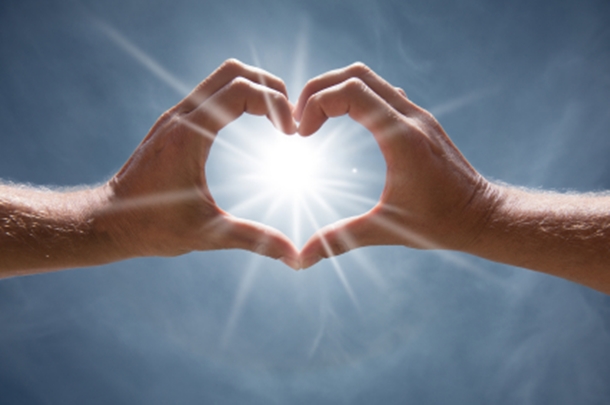What’s your romantic orientation? Does it align with your sexual orientation, or do you experience romantic attraction differently from sexual attraction?
You may contemplate your romantic orientation as often as you think about love and sex, or maybe this is the first time you’re hearing about it, and you’re curious about discovering something deeper about yourself.
Let’s take a look at the new examination of an old subject, the romantic but non-sexual component of attraction to others that today we call the romantic orientation.
What Is Romantic Orientation?
A person’s romantic orientation is the way they identify or describe or classify their own romantic attraction towards others. Romantic attraction may be to persons of a specific sex or a specific gender, or to other qualities.
The romantic orientation may align with sexual attraction, but many experience romantic attraction and sexual attraction differently.
The romantic orientation is often called “affectional orientation.”
Read: Non-Sexual Intimacy: How to Be Intimate without Sex

Romantic Orientation vs Sexual Orientation
Most of us equate romantic orientation and sexual orientation. Are they the same thing?
Yes and no. Many people experience emotional and romantic attachment and attraction to the same genders they experience sexual attraction to.
Perhaps you feel great affection or desire for closeness and emotional intimacy with the same women you are sexually attracted to. But this isn’t always the case, and there are complicating factors because the two are related but distinct.
Some people don’t experience sexual attraction. They have a very low sex drive, or none, and may call themselves asexual. But they still desire romance and intimacy. They are emotionally or romantically attracted to others.
Read: Asexuality and the Asexual Spectrum
Some people experience sexual attraction to both men and women, and identify as bisexual. But as much as a man may enjoy the occasional sexual affair with another man, he may not feel romance or an emotional attraction. It’s just sex. He feels romance with his wife.
Romantic orientation is about who you feel romantic affection for and the desire for emotional and romantic intimacy. Sexual orientation is about what genders or sexes you are sexually attracted to. While these often align, that is not always the case.
Read: 23 Types of Sexuality: Glossary of Terms
15 Romantic Orientations and Their Meanings
There are many romantic orientations. Let’s take a look at some of them.
1. Alloromantic
Alloromantic romantic orientation simply means that a person experiences romantic attraction. It doesn’t define towards whom or in what circumstances.
2. Androromantic
There are three ways of interpreting “androromantic” in terms of romantic orientations. One is simply a romantic attraction towards men.
The second is to people who present as masculine, regardless of their gender.
The third is towards people who have male anatomy regardless of how they identify.
Androromantics can be transgender, nonbinary, male, or female.
Read: Are You Trans Attracted and Polyamorous?
3. Aromantic
Aromanticism is a romantic orientation where the person does not experience romantic attraction or experiences very little romantic attraction. They may be gay, straight or bisexual, that is, feel sexually attracted to one or more genders, but don’t experience the desire for romantic emotional intimacy with anyone.
Aromanticism compares to asexuality, but an asexual person may have a robust romantic orientation, and a very sexual person may experience no emotional attraction or romance. This romantic orientation is often shortened to “aro.”
Read: Aromantic Spectrum: 13 Aromantic Orientations
4. Biromantic
Biromantic means someone experiences romantic attraction to men and women.
Read: Where To Meet Bisexual Women Online

5. Ceteroromantic
When transgender or nonbinary people experience romantic attraction to transgender and nonbinary people, they are ceteroromantic. (The term ceterosexual is parallel for sexual orientation as well.)
Read: Sexual Diversity in Poly Relationships
6. Frayromantic
This romantic orientation is when someone feels romantic attraction towards those that they do not have a close bond with, and lose that attraction as they get to know them.
7. Grayromantic
Grayromantics only experience romantic attraction rarely or under very limited circumstances.
8. Gyneromantic
This romantic orientation is about being romantical attracted to women, to people that identify as women, or to femininity.
Read: Women Share Why They Chose Polyamory
9. Demiromantic
The demiromantic is a romantic orientation where someone experiences romantic attraction only towards those they share a close emotional bond with.

10. Heteroromantic
When a man or woman feels romantic attraction towards the opposite gender, this romantic orientation is called heteroromantic.
11. Homoromantic
Homoromantic is romantic attraction between people of the same gender.
12. Panromantic
The panromantic orientation is about experiencing romantic attraction to all genders, including male, female, transgender, nonbinary, and more.
Read: Pansexuality vs Bisexuality

13. Polyromantic
While panromantic means attraction to all genders, polyromantic means romantic attraction to many genders but not all. In other words, someone may be attracted to nonbinary folks, men, and transgender men, but not women.
14. Recipromantic
Someone who experiences romantic attraction only towards those who feel that way about them first is a recipromantic.
15. Sapioromantic
Those who are attracted romantically towards people with high intelligence have a romantic orientation called sapioromantic.
Read: Polyamory Dating Sites: The Ultimate Guide

What’s My Romantic Orientation?
If you want to know more about your romantic orientation and define it, you can examine your dating history and experiences of romantic attraction and compare them to your sexual history and sexual orientation.
Do we need to know, understand, label and define our romantic orientation? If you feel like it is overkill, or you simply prefer not to label everything, you’re not alone.
Some of us enjoy experiencing fluidity and flexibility in romance, love, and sex, and simply go through life’s changes with an open mind. But some of us find it more helpful to define and distinguish different aspects of how we relate and connect to others.
Read: Tips for Nurturing Connections with Poly Partners
If we don’t experience a lot of discrepancy between our sexuality and our romantic orientation, we may not feel the need to define it and explain it to others. But if your romantic attractions are very different from your sexual attractions, having a vocabulary to help you describe your desires and needs to others may feel practical.
Being familiar with romantic orientations is useful whether or not we want to name our own. Polyamory is about connecting sexually and romantically to many people, and it will be helpful to some of your lovers or friends to know their romantic orientation or what they mean when they call themselves aromantic, ceteromantic, polyromantic, and more.
Where do you fit in on this list? Do you, or do you have a different romantic orientation from those listed? Does your romantic orientation match your sexual orientation? Is it something you’ve thought about before?


Tell us what you think